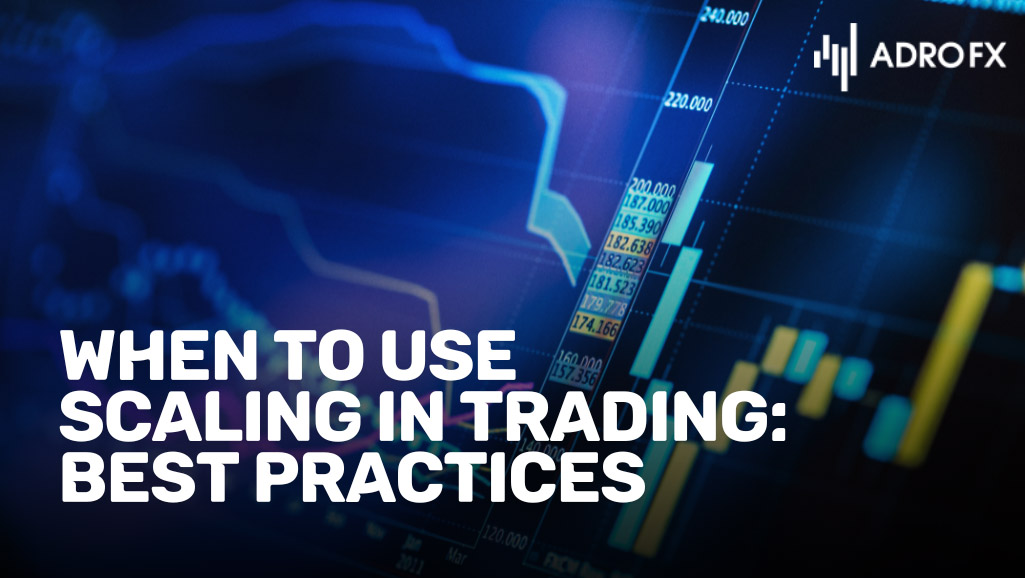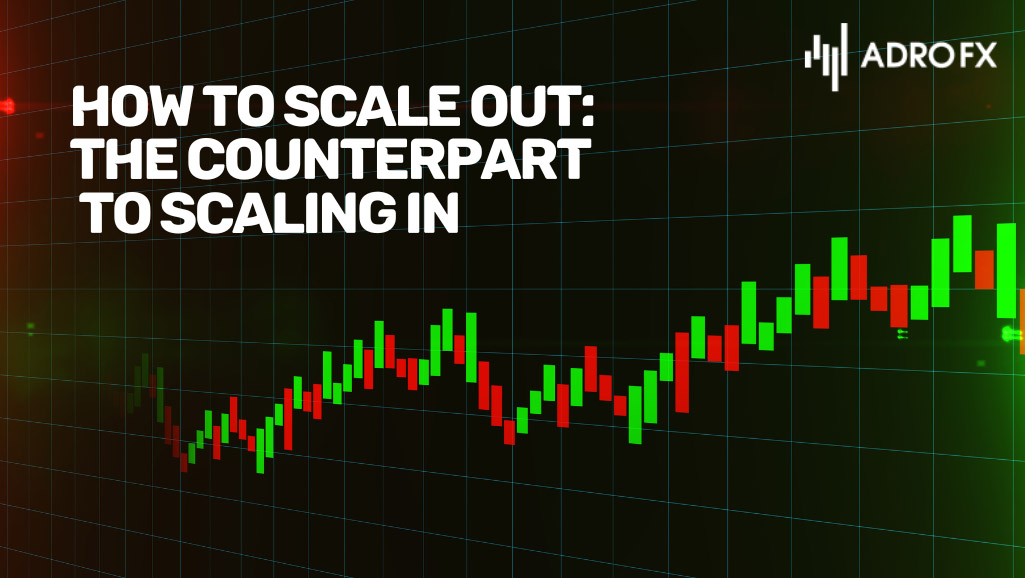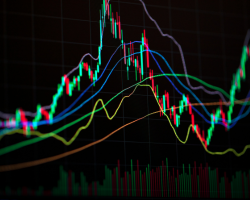How to Master Scaling in Trading: Adding Positions to Maximize Profit

Did you know that scaling in trading can be a game-changer for managing risk and maximizing profits in volatile markets? Whether you're trading forex, stocks, or commodities, this trade management strategy allows you to adapt your position sizing to market conditions, enhancing your overall profitability.
At its core, scaling in trading involves adding positions to an existing trade as the market moves in your favor. Instead of committing your full capital upfront, you enter the market in stages, enabling a more dynamic approach to risk and reward. This strategy is especially effective in volatile markets, where rapid price movements create opportunities to optimize trade entries.
Why do successful traders embrace scaling in? For one, it combines better risk management with the potential for higher returns, as you add positions only when the market confirms your analysis. By strategically scaling in, traders not only capitalize on favorable market trends but also maintain control over their exposure. In essence, scaling in trading is about precision, allowing you to adapt and thrive in ever-changing market conditions.
Why Scaling In Can Be a Powerful Strategy for Traders
Scaling in isn’t just about adding more positions - it’s about using a structured approach to optimize your trades. This strategy works across various trading styles, from trend-following to breakout trading. For instance, a trader identifying a strong upward trend might start with a small initial position and gradually add positions as the trend gains momentum. Similarly, in a breakout scenario, traders might scale in after the price confirms a breach of a key resistance level.
The benefits of scaling in are clear. First, it allows you to minimize initial risk exposure. By starting with a smaller position, you reduce the potential impact of being wrong about the market direction. Second, it enhances your profit maximization potential. As the market moves in your favor, the additional positions amplify your returns, all while aligning with your trade management strategy.
However, the success of scaling in lies in discipline. Without a clear plan, scaling in can lead to overexposure and increased risk. But when done correctly, adding positions strategically ensures you’re leveraging market conditions to your advantage while maintaining control over your trades.
Also read: Pillars of a Profitable Trading Strategy

When to Use Scaling in Trading: Best Practices
Scaling in is an effective trading strategy, but its success relies on choosing the right market conditions and employing disciplined practices. Trending markets are particularly favorable for scaling in. When a strong upward or downward trend is evident, adding positions incrementally enables traders to capitalize on the momentum without overcommitting upfront. For instance, in forex trading, currency pairs like EUR/USD or GBP/USD often exhibit reliable trends, making them ideal for this approach. Additionally, high liquidity markets, including major stocks or commodities like gold, support smoother price movements, reducing the risk of slippage when adding positions.
Another context where scaling in excels is during breakout scenarios. These occur when prices breach significant support or resistance levels, often indicating the start of a new trend. However, breakouts can also lead to false signals, so waiting for confirmation, such as a sustained move beyond the breakout level, is crucial before adding positions. Consolidation phases within a trend also offer opportunities; for example, during pullbacks or retracements, traders can scale in at lower prices while maintaining alignment with the overarching trend.
To optimize scaling in, traders should rely on tools like moving averages, Fibonacci retracement levels, or momentum indicators to identify entry points. For instance, a 50% Fibonacci retracement of a trending move can act as an excellent area to scale in. Beginning with a smaller initial position allows traders to assess market conditions before increasing exposure. Risk management remains a cornerstone of this strategy. Defining the number of positions to add, the intervals for doing so, and the total acceptable risk for the trade ensures that scaling in remains calculated rather than reactive.
Common Mistakes to Avoid When Scaling Into Trades
While scaling in offers unique benefits, it can lead to significant challenges if not executed with care. One common mistake is overexposure, which occurs when traders add positions too aggressively, resulting in a disproportionate level of risk. For example, doubling down on every small price fluctuation can quickly deplete capital, particularly in volatile markets. Emotional trading further compounds this issue. Driven by fear or greed, traders may abandon their pre-planned strategy, adding positions impulsively or chasing market moves without clear justification.
Another frequent error is failing to implement proper risk management measures. Adding positions without predefined Stop Loss levels or a clear understanding of total exposure leaves traders vulnerable to significant losses. For instance, in forex trading, rapid market reversals caused by unexpected news events can result in cascading losses if positions are not adequately protected. Traders who ignore position sizing also face challenges. Each addition should represent a calculated percentage of the overall trade size, ensuring that even if the market moves against them, the potential loss remains manageable.
Market conditions are another critical factor often overlooked. Scaling in is most effective during strong trends or breakout scenarios. Attempting this strategy in range-bound or choppy markets, where price movements lack clear direction, can lead to over-trading and frustration. Additionally, adding positions in illiquid markets can result in poor fills and heightened slippage, reducing profitability.
Also read: Adaptive Trading: Strategies for Every Market Condition

Risk Management: How to Protect Your Trades When Scaling In
Scaling in trading offers significant opportunities for profit maximization, but without robust risk management, it can expose traders to unnecessary financial dangers. Effective risk management is the backbone of any successful trading strategy, especially when employing a scaling-in approach that gradually increases exposure as market conditions evolve.
A key element of risk management in trading is maintaining a clear understanding of your total exposure. As positions are added, the overall risk on the trade increases, making it essential to adjust your strategy dynamically. Stop Loss orders are a cornerstone of trade protection strategies. These predefined exit points ensure that losses are capped if the market moves against the scaled-in positions. However, when scaling in, Stop Loss levels should be recalibrated to reflect the combined position size and the adjusted risk-reward ratio.
The risk-reward ratio is another critical concept when scaling into trades. Before adding positions, traders must ensure that the potential reward justifies the increased risk. For instance, if the initial trade had a risk-reward ratio of 1:3, scaling in should not dilute this balance. Traders can use trailing Stop Losses to lock in profits as new positions are added, maintaining favorable risk-reward dynamics.
Position sizing is another indispensable tool. A common mistake among traders is increasing position sizes too aggressively, leading to overexposure. Implementing a fixed-percentage rule, such as limiting each scaled-in position to a specific percentage of the total account size, ensures risk remains manageable. Tools like risk calculators can help traders determine the ideal position size for each addition.
Diversification also plays a subtle yet important role in managing scaling-in risks. While the strategy typically focuses on a single trade, balancing exposure across multiple assets can mitigate potential losses. For example, if scaling into a forex trade, it might be beneficial to monitor correlated currency pairs to avoid amplifying risk unintentionally.
By incorporating these risk management techniques, traders can scale in with confidence, minimizing potential losses while positioning themselves for higher rewards.
Advanced Scaling In Strategies
For traders seeking to elevate their skills, advanced scaling techniques provide opportunities to fine-tune their strategies and capitalize on complex market dynamics. These methods rely on technical indicators, market signals, and a deep understanding of price behavior to guide scaling decisions.
One sophisticated approach involves scaling in based on momentum indicators such as the Relative Strength Index (RSI) or the Moving Average Convergence Divergence (MACD). For instance, a trader might begin with a small position and then add incrementally as the MACD line crosses above the signal line, confirming bullish momentum. Similarly, the RSI can be used to time position additions during pullbacks in a trending market, ensuring trades are aligned with overall market strength.
Another advanced method is using Fibonacci retracement levels to determine scaling-in points. Traders often add positions at key retracement levels such as 38.2% or 61.8%, as these levels frequently act as support or resistance in trending markets. This approach combines technical analysis with strategic positioning, allowing traders to add positions with precision.
Market volume is another critical factor in advanced scaling strategies. High trading volume during price movements can confirm the strength of a trend, providing confidence to scale in further. Conversely, dwindling volume may signal a weakening trend, cautioning against additional exposure. Tools like volume profile charts can help traders identify zones of interest for scaling decisions.
Ultimately, advanced scaling techniques require discipline, experience, and the use of reliable tools to ensure effective execution. By combining these strategies with rigorous risk management, traders can harness the full potential of scaling in to achieve consistent profitability.
Also read: Choosing the Right Forex Currency Pairs: A Comprehensive Guide

How to Scale Out: The Counterpart to Scaling In
Scaling out is the strategic process of reducing positions gradually as profits accumulate, offering a counterpart to scaling in for a comprehensive trade management strategy. While scaling in focuses on building positions to maximize potential returns, scaling out emphasizes locking in gains and managing risk as the trade progresses.
The concept of scaling out is straightforward: as the market moves in your favor, you close portions of your position incrementally. For instance, in forex trade, a trader might close 50% of their position at a specific profit target, then another 25% as the trend continues, leaving a smaller portion to ride the remaining trend. This approach ensures that profits are secured while allowing for additional gains if the market momentum persists.
Scaling out complements scaling in by maintaining a balanced approach to risk and reward. It enables traders to lock in profits while reducing exposure to market reversals. For example, in volatile markets such as cryptocurrency trading, scaling out can mitigate the impact of abrupt price corrections.
A critical advantage of scaling out is the psychological benefit it offers. By securing partial profits, traders can alleviate the fear of losing gains, fostering a more disciplined approach to decision-making. This contrasts with the "all or nothing" mentality, which can lead to emotional trading and missed opportunities.
However, scaling out is not without its challenges. Determining the right points to exit requires a careful balance between technical analysis and market conditions. Traders often use trailing Stop Losses or profit targets based on support and resistance levels to guide their exit strategy. Additionally, scaling out must be aligned with the overall trade plan to ensure that risk-reward ratios remain favorable.
Conclusion: Mastering the Art of Scaling In for Trading Success
Scaling in is more than just adding positions -it is a nuanced strategy that combines technical skill, risk management, and market insight. As explored, this approach enables traders to capitalize on favorable market conditions, optimize risk exposure, and enhance overall profitability.
By understanding when and how to scale in, traders can turn volatile market conditions into opportunities. Tools such as Stop Loss orders, position sizing, and technical indicators ensure that risks are managed effectively, while advanced techniques like using Fibonacci levels or volume analysis add layers of precision. Scaling out, as its counterpart, complements this strategy by securing profits and reducing exposure as trades progress.
By incorporating scaling in into their trading arsenal, traders can achieve greater control, adaptability, and success in navigating today’s dynamic markets.
Explore scaling in strategies and take your trading to the next level with the robust resources available through AdroFx.
About AdroFx
Established in 2018, AdroFx is known for its high technology and its ability to deliver high-quality brokerage services in more than 200 countries around the world. AdroFx makes every effort to keep its customers satisfied and to meet all the trading needs of any trader. With the five types of trading accounts, we have all it takes to fit any traders` needs and styles. The company provides access to 115+ trading instruments, including currencies, metals, stocks, and cryptocurrencies, which make it possible to make the most out of trading on the financial markets. Considering all the above, AdroFx is the perfect variant for anyone who doesn't settle for less than the best










